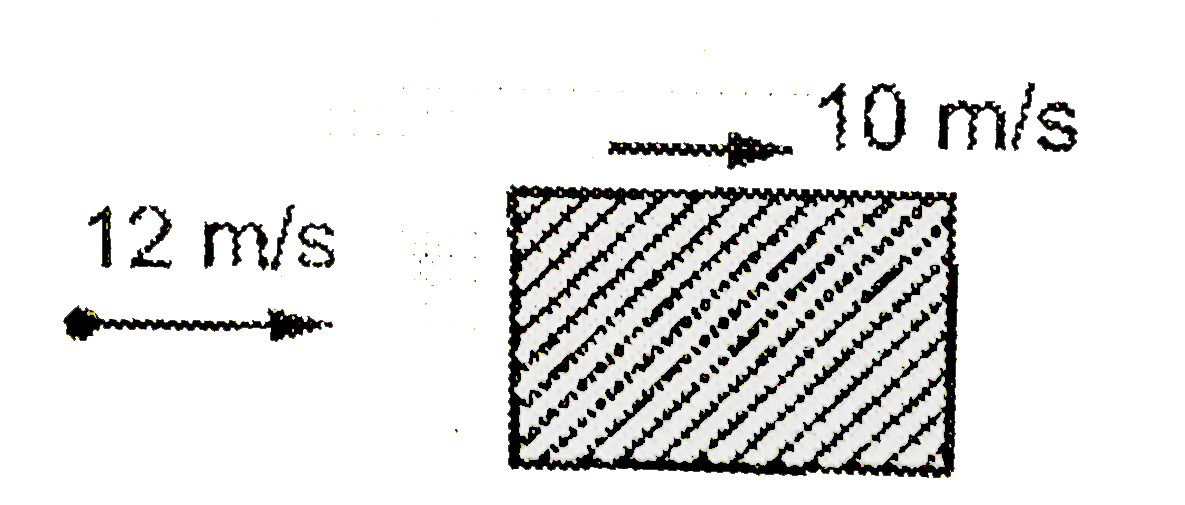Statement 1 : Two particles moving in the same direction do not lose all their energy in a completely inelastic collision.
Statement 2 : The principle of conservation of momentum holds true for all kinds of collisions.
(a) Statement -1 is true, Statement -2 is true , Statement -2 is the correct explanation of Statement 1.
b) Statement -1 is true, Statement -2 is true, Statement -2 is not the correct explanation of Statement -1
(c) Statement -1 is false, Statement -2 is true.
(d) Statement -1 is true, Statement -2 is false.
The correct Answer is:A
Step by step video, text & image solution for Statement 1 : Two particles moving in the same direction do not lose all their energy in a completely inelastic collision. Statement 2 : The principle of conservation of momentum holds true for all kinds of collisions. by Physics experts to help you in doubts & scoring excellent marks in Class 11 exams.
Topper's Solved these Questions
Similar Questions
Two particles each of mass m moving with equal speed 2m/s along the indicated direction in the figure undergo a perfectly inelastic collision.Velocity of combined system after collision is ?
View SolutionStatement 1: Two particle have same linear momentum, wavelength of both particle will be same
Statement 2: If wavelength of particle increase then energy and linear momentum also increasesView Solution
Knowledge Check
- Question 1 - Select One
Statement-1 : Kinetic energy is conserved in both, perfectly elastic and perfectly inelastic collisions.
Statement-2 : Because linear momentum is conserved in both.AStatement - 1 is ture , statement -2 is true, and statement-2 is correct explanation of statement -1.BStatement-1 if ture, statement-2 is true, but statement -2 is not a correct explanation of statement-1.CStatement-1 is true, but statement -2 is false.DStatement-1 is false, but statement-2 is true. - Question 2 - Select One
A light particle moving horizontally with a speed of 12m/s strikes a very heavy block moving in the same direction at 10m/s. The collision is one-dimensional and elastic. After the collision, the particle will
 Amove at 12m/s opposite to its original directionBmove at 8m/s in its original directionCmove at 8m/s opposite to its original directionDmove at 2m/s in its original direction
Amove at 12m/s opposite to its original directionBmove at 8m/s in its original directionCmove at 8m/s opposite to its original directionDmove at 2m/s in its original direction - Question 3 - Select One
Assertion:The principal of conservation of energy is valid for inelastic collision.
Reason: The principal of conservation of energy holds good in both elastic and inelastic collision. In case of inelastic collision kinetic energy before and after collision is not same.AIf both assertion and reason are true and reason is the correct explanation of assertion.BIf both assertion and reason are true but reason is not the correct explanation of assertion.CIf assertion is true but reason is false.DIf assertion and reason are false.
Which of the following statements is false for collisions-
(1)Momentum is conserved in elastic collisions but not in inelastic collisions.
(2)Total-kinetic energy is conserved in elastic collisions but momentum is not conserved.
(3)Total kinetic energy and momentum both are conserved in all types of collisions
(4)Total kinetic energy is not conserved in inelastic collisions but momentum is conservedView SolutionStatement-1: kinetic energy of SHM at mean position is equal to potential energy at ends for a particle moving in SHM.
Statement-2: Total energy in SHM is conserved.View SolutionTwo identical vehicles are moving with same velocity v towards an intersection as shown in figure. If the collision is completely inelastic, then
 View Solution
View SolutionTwo particles moving initially in the same direction undergo a one- dimensional , elastic collision . Their relative velocities before and after the collision are →v1 and →v2. Which of the following is not correct?
View SolutionAssertion: Linear momentum is conserved in both elastic and inelastic collisions.
Reason: Total energy is conserved in all collisions.View Solution

